July 2024
I have spent the last week at Oxford Experience, and the class I chose was Modernist Literature Through Oxford and London, concentrating on Dorothy Sayers’s Gaudy Nights, T.S. Eliot’s Wasteland, Virginia Woolf’s Mrs. Dalloway and the writings and paintings of Wyndham Lewis.
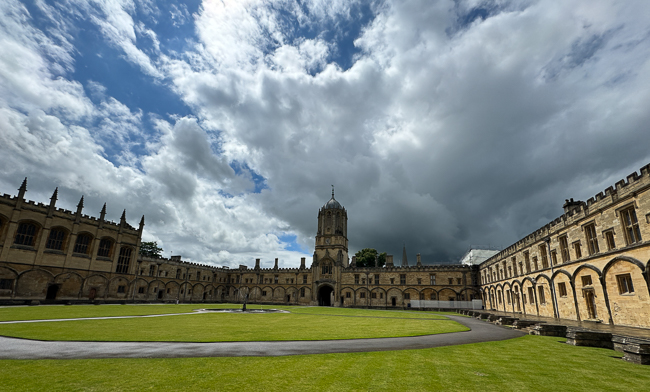
The Oxford Experience life is centered at Christ Church College.
Virginia Woolf and others of her era were part of what later became known as the Bloomsbury group, as they lived and worked in the Bloomsbury area of London. Ironically, this is where the VSA lecture courses I had taken the two weeks before were given.

The home of Dorothy Sayers
If you have not read Sayers, I suggest you start with the Peter Whimsey Series. Dorothy Leigh Sayers (1893 – 1957) was an English crime novelist, playwright, translator and critic. She grew up in Oxford, just a few steps from Christ Church College and next door to where her father was headmaster at Christ Church Cathedral School.

Gaudy Nights takes place in Oxford. Sommerville College is the model for Shrewsbury College, the center of Gaudy Nights.
Women were not considered full members of the University until October 192o. However, it was not until 1957 that quotas restricting the number of women undergraduates in Oxford were removed, and it wasn’t until 1959 that the five women’s colleges received the same ‘full status’ as the men’s colleges. So, in Sayers’s time, women did the same work as men but did not receive a degree.
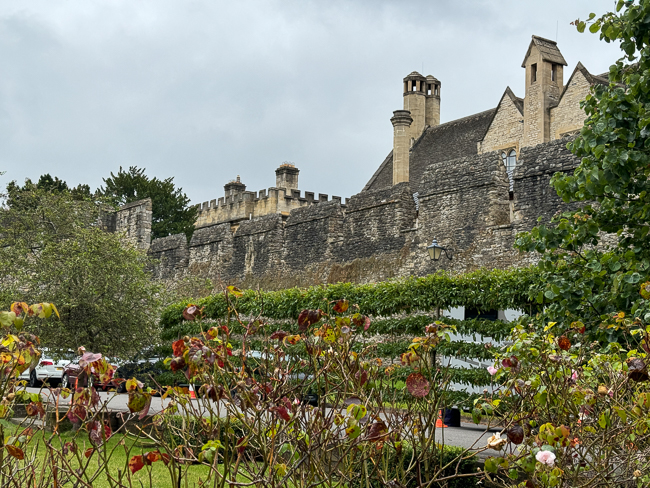
The City Walls of Oxford still exist at New College.
The present surviving parts of Oxford’s medieval city wall date from the first half of the thirteenth century, when the older wall was overhauled and the remaining sections of rampart replaced by stone. Although it is commonly called the city wall, Oxford was a town until the creation of the See of Oxford in 1542.
The wall enclosed an area of approximately 115 acres. It originally had an internal wall walk and at least 21 semi-circular bastions. Its circumference was approximately two miles.

When William of Wykeham bought the land for New College from the City of Oxford in 1379, the latter made it a condition that the college should maintain the wall around the site. The Lord Mayor of Oxford and a group of city councilors still inspect the city wall at New College every three years.
Percy Wyndham Lewis (1882 – 1957) was a British writer, painter, and critic. He co-founded the Vorticist movement in art and edited BLAST, the literary magazine of the Vorticists.

Vorticist Composition by Wyndham Lewis is a painting of the Dining Hall of New College.
Wyndham was a friend of T.S. Eliot, and they both met James Joyce at Oxford. Eliot’s Preludes and Rhapsody on a Windy Night appeared in BLAST in July 1915. Eliot reviewed Lewis’s first novel, Tar, in 1918, describing him as “the most fascinating personality of our time, in whose work we recognize the thought of modern and the energy of the caveman”. In turn, Lewis considered Eliot “the most interesting man in London Society.”
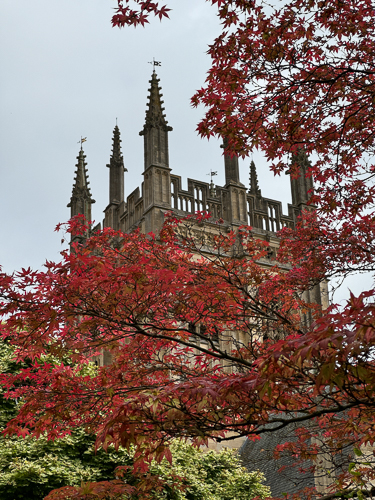
Enjoying Oxford
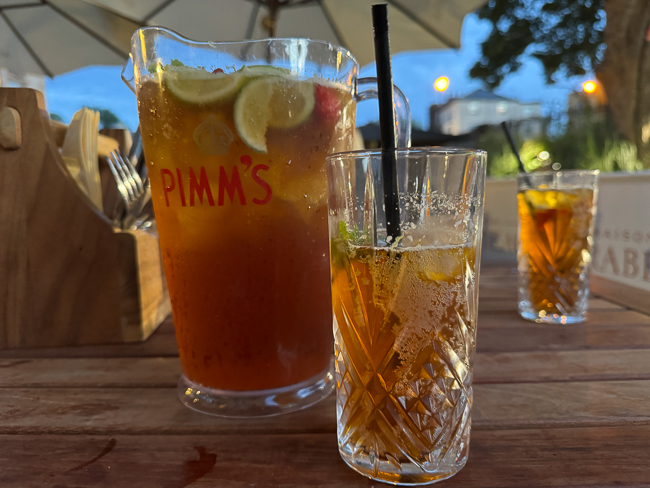
Continuing the Trail of Artists in Bloomsbury, London
Tavistock Square
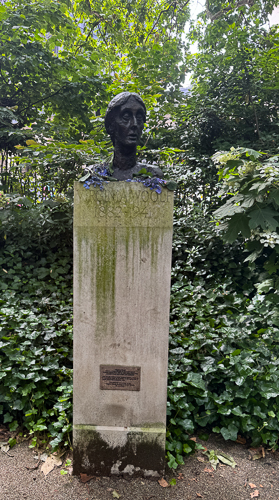
A statue of Virginia Woolf in Tavistock Square
Virginia Woolf moved to 52 Tavistock Square in 1924. Many passages of Mrs. Dalloway and To the Lighthouse echo this area, and the vivid depictions of city life were inspired by what she called “street hauntings”, which involved her watching people interact with the cityscape. The Tavistock Hotel now sits where her home once stood.
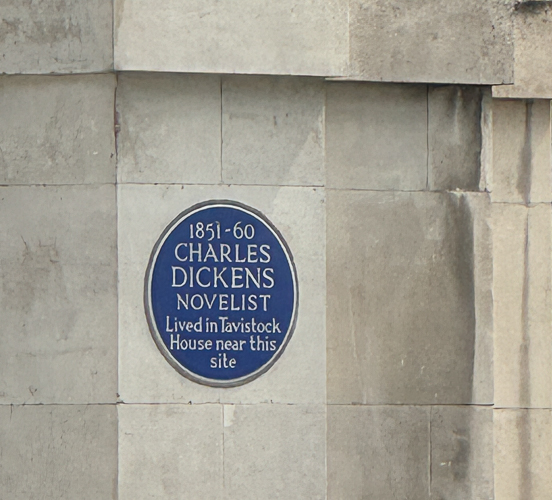
Charles Dickens also lived on Tavistock Square. At Tavistock House, Dickens wrote Bleak House, Hard Times, Little Dorrit, and A Tale of Two Cities. He also put on amateur theatricals, which are described in John Forster’s Life of Charles Dickens.

You will also find this memorial in Tavistock Square. On July 7, 2005, there was a series of four coordinated suicide attacks carried out by Islamist terrorists that targeted commuters traveling on London’s public transportation during the morning rush hour. The fourth terrorist detonated a bomb on a double-decker bus in Tavistock Square.
Fitzroy Square
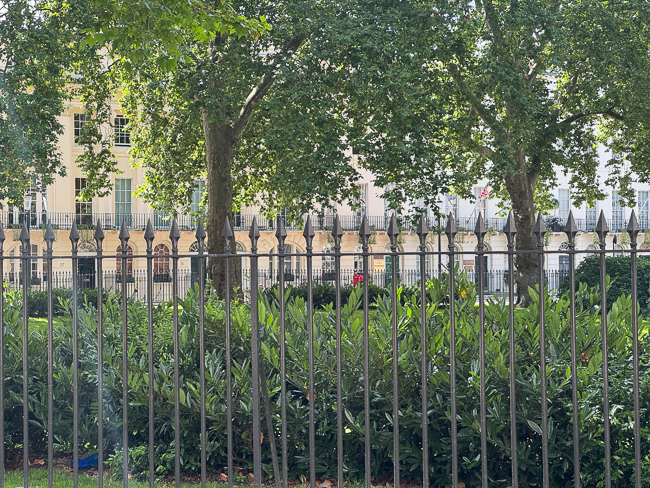
Fitzroy Square
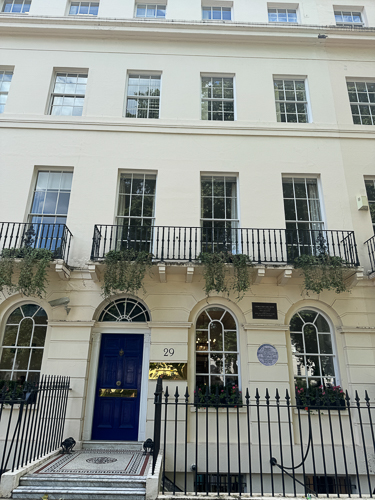
No. 29 Fitzroy Square was the home of George Bernard Shaw from 1887 until his marriage in 1898 and later of Virginia Woolf and her sister Vanessa Bell from 1907 to 1911.
Garden Square

Garden Square
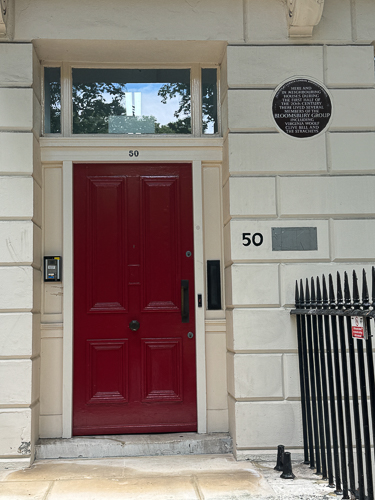
50 Gordon Square holds a plaque reading: Here and in neighboring houses during the first half of the 20th century, there lived several members of the Bloomsbury Group, including Virginia Woolf, Clive Bell, and The Stracheys.
Throughout her life, Woolf suffered from mental health issues, which were later diagnosed as bipolar disorder. When Woolf’s father died in 1904, the writer had her second nervous breakdown. This led to the writer and her siblings selling the family home and moving to 46 Gordon Square in Bloomsbury.
Author and critic Giles Lytton Strachey lived at 51 Gordon Square. He was also a founding member of the Bloomsbury Group and author of Eminent Victorians. Strachey established a new form of biography in which psychological insight and sympathy are combined with irreverence and wit.
Woburn Square
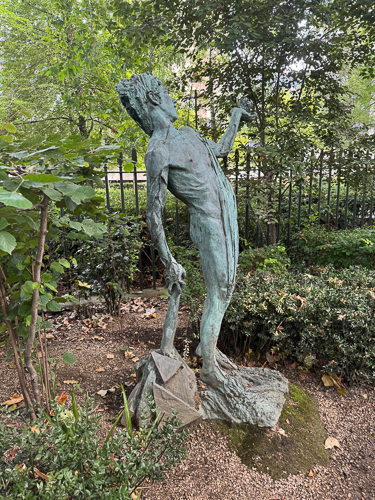
Green Man by Lydia Kapinska 1999
Hidden in the shrubbery at the south end of Woburn Square is a modern sculpture (1999) by Lydia Kapinska of an ancient imaginary creature, a Green Man. It has no real reason for its placement at that spot. But on the plaque giving the name of the sculptor is a quotation from The Waves by Virginia Woolf: My roots go down to the depths of the world… I am as green as a yew tree in the shade of the hedge…
St James Square

The London Library
Thomas Carlyle founded the London Library as an alternative to the library at the British Museum, which he claimed was filled with “snorers, snufflers, wheezers, spitters” interrupting his quiet study. Past members include Charles Dickens, Arthur Conan Doyle, Charles Darwin, Agatha Christie, and Winston Churchill—some later providing their books own for the shelves. The library was used often by Leonard Woolf and holds a fine collection of both Virginia Woolf’s work and that of Hogarth Press.
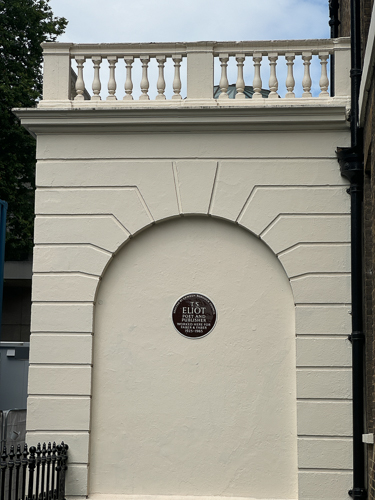
24 Russel Square
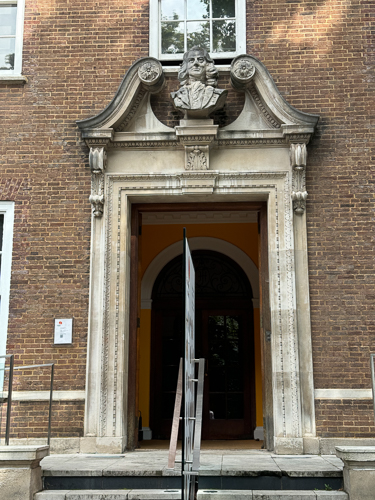
The Foundling Hospital was founded in 1739 by the philanthropic sea captain Thomas Coram. It was established for the “education and maintenance of exposed and deserted young children.” The word “hospital” was used in a more general sense. simply indicating the institution’s “hospitality” to those less fortunate.
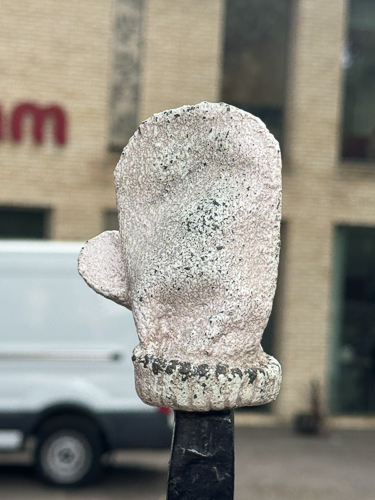
Bronze Sculpture by Tracy Emin
This very tiny bronze mitten on the Foundling Museum fence is part of Tracy Emin’s Baby Things series. It was placed there during an exhibit of her work at the Museum in 2010.
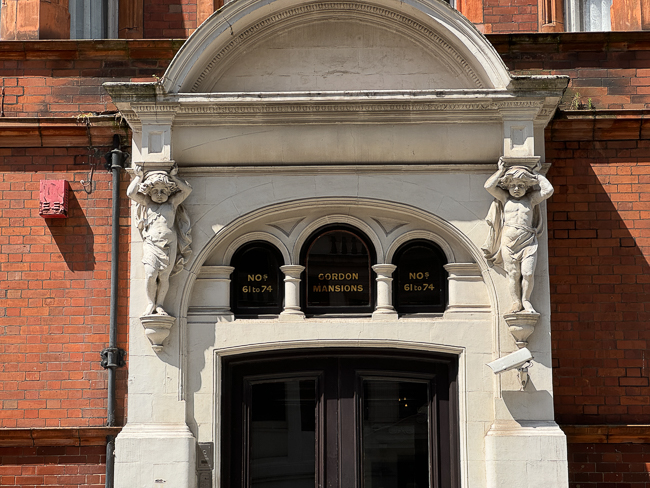
I am always a sucker for Atlas and Caryatid. I have no idea what they are called when putti are holding up the pediment.
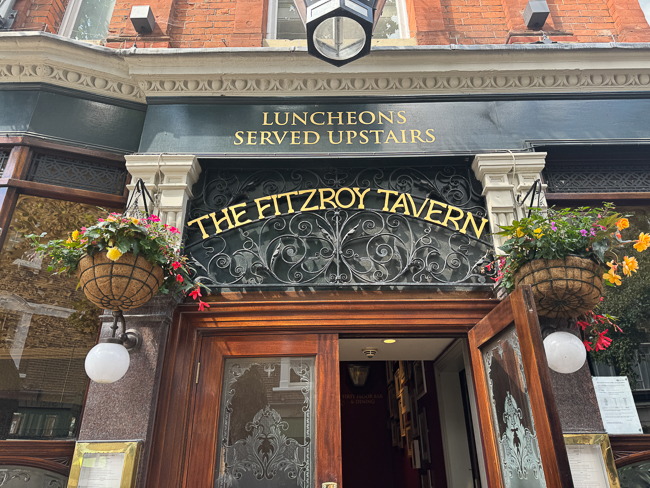
This stunning, recently restored building became famous as a meeting place for many of London’s artists, intellectuals, and bohemians from the 1920s to the mid-1950s.
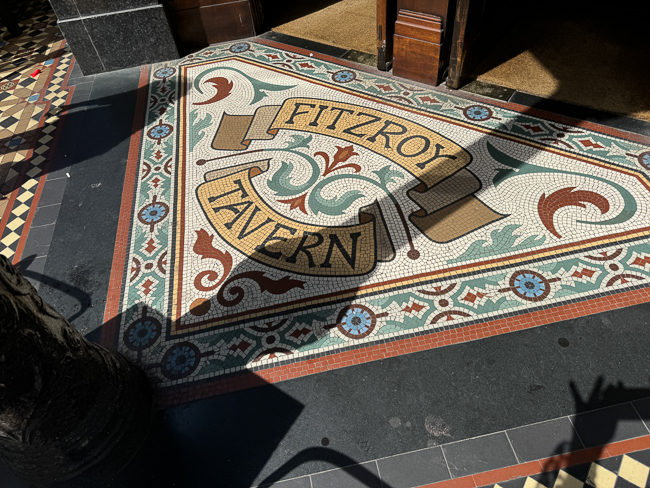
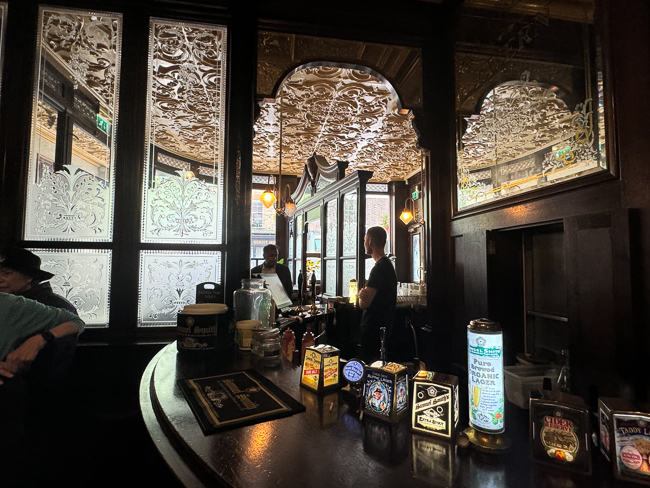
Polished mahogany partitions with acid-etched glass were installed downstairs to recreate the original snugs.
The building was originally constructed as the Fitzroy Coffee House in 1883 and converted to a pub (called “The Hundred Marks”) in 1887.
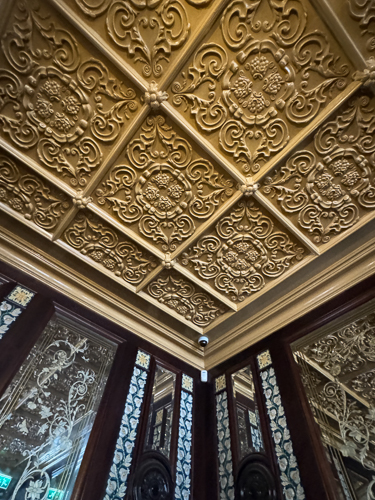
A new Lincrusta ceiling
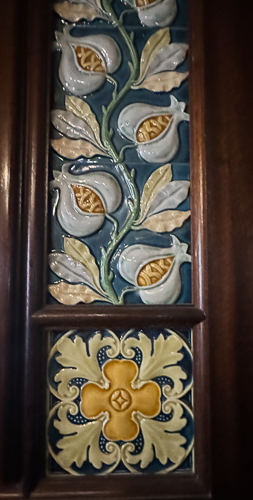
Although geographically close to the Bloomsbury set, Fitzrovians were wilder in temperament, a loose-knit gang of friends described in the Times Literary Supplement as a ‘world of outsiders, down-and-outs, drunks, sensualists, homosexuals, and eccentrics’.
Regulars included painters Nina Hamnett, Augustus John, Walter Sickert, and Wyndham Lewis, the occultist Aleister Crowley, and poets Stephen Spender and Ezra Pound. In the late thirties and early forties, journalists and playwrights working at the nearby BBC dropped by, including Dylan Thomas, Louis MacNiece, and George Orwell (who conceived the Nineteen-Eighty-Four notion of absolute hell while doing a brief stint at the BBC). Even Albert Einstein came for a pint.
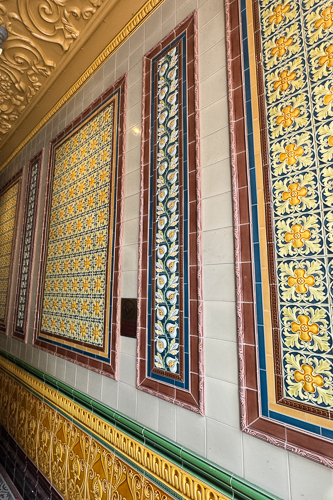
The pub was closed for a year in 2015 and underwent a complete restoration. In the seventies, its Victorian interior had been ripped out, so everything needed to be replaced. The Fitzroy Tavern was named the best-restored pub in the UK in 2017.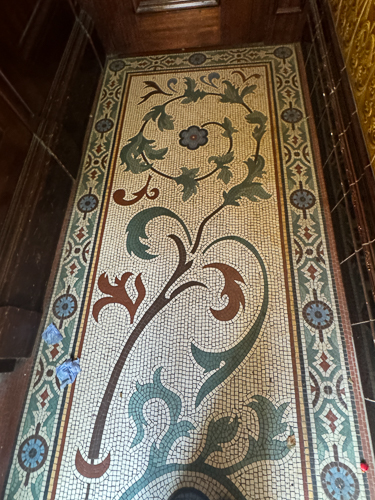 An often-told story of the Fitzroy Tavern involved a former licensee of the pub named Judah ‘Pop’ Kleinfeld. Having seen the loser of a darts match in the public bar throw a dart into the ceiling in exasperation, Kleinfeld hit upon the idea to provide darts to the public with little paper bags attached, which they would then throw into the ceiling for an aptly named charity called Pennies From Heaven.
An often-told story of the Fitzroy Tavern involved a former licensee of the pub named Judah ‘Pop’ Kleinfeld. Having seen the loser of a darts match in the public bar throw a dart into the ceiling in exasperation, Kleinfeld hit upon the idea to provide darts to the public with little paper bags attached, which they would then throw into the ceiling for an aptly named charity called Pennies From Heaven.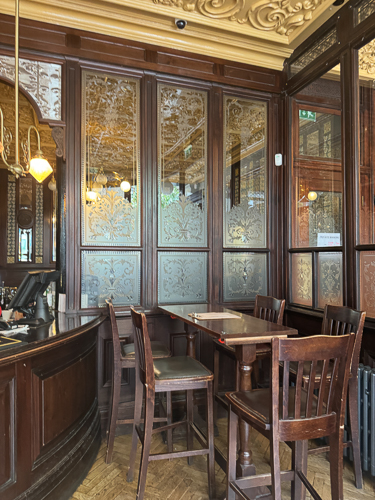
St Georges Garden Bloomsbury

In the early 1700s, as graveyards directly around churches had started to fill up in London, new burial grounds and bodies often had to be buried some distance from the church. This is the case with St. George’s. This site served two churches, St George’s Bloomsbury and St George the Martyr on Queen’s Square. The graveyard was closed in 1884/5 and turned into a park.
That was a wild meander of London and Oxford that tied artists, authors, and my interests into one. It made sense to me, even if it didn’t to anyone else.